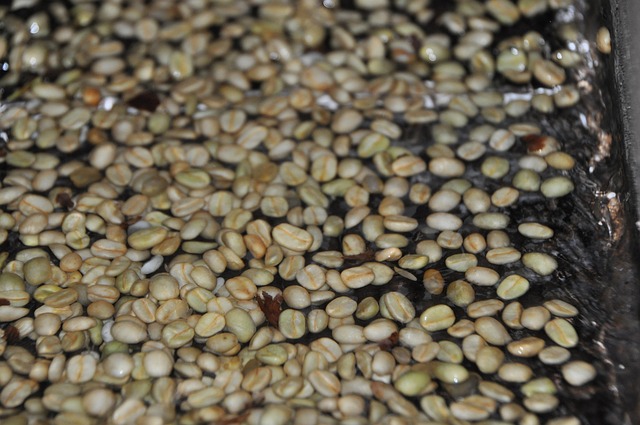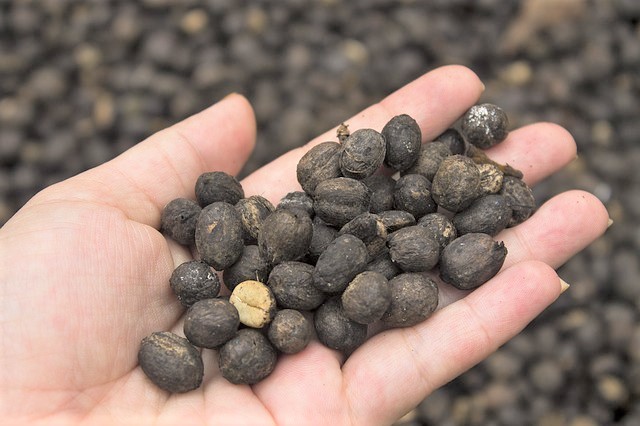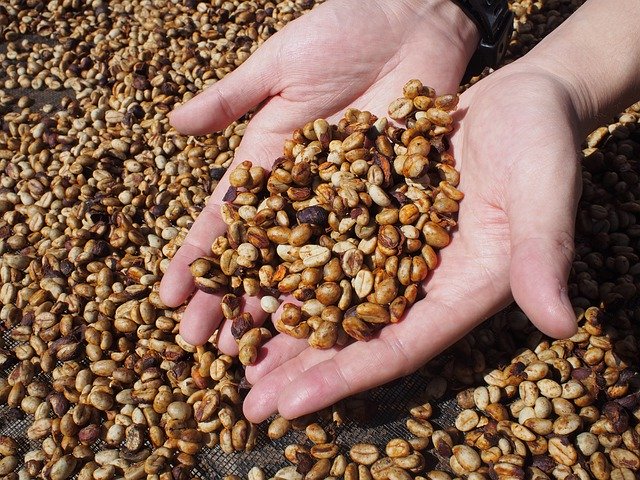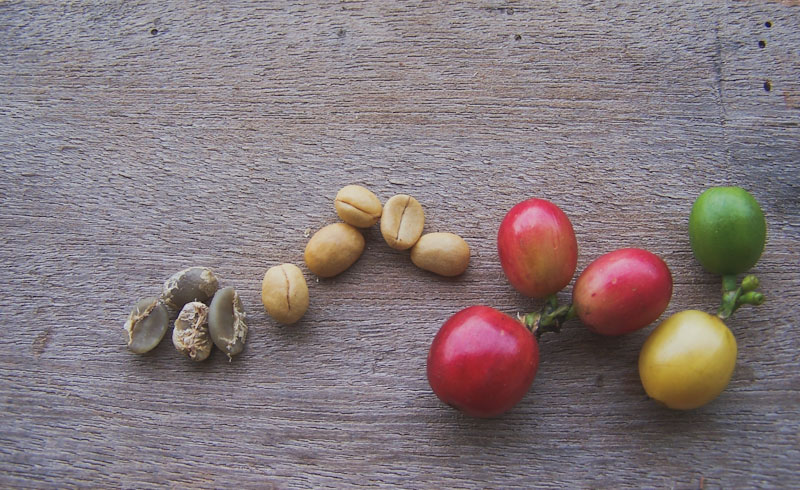COFFEE PROCESSING
Coffee processing refers to the steps that the coffee beans go through post-harvest. The processes can be categorized into three different key types: natural/unwashed, washed and honey. Knowing more about these processes can help you understand the differences between the flavour and quality of the coffee.
WASHED / FULLY WASHED – WET PROCESS
In the world of speciality coffee, the washed process (also known as the “wet process”) dominates. The washed method often produces the highest quality coffee, and some of the world’s finest coffees (often most expensive) are created through this process.
In this process, the skin, pulp and mucilage (the gummy, pasty, substance that surrounds the beans and gives coffee its sweet flavour) of the coffee cherries are removed using water and fermentation. This is the conventional form of Arabica coffee processing in most regions of the world, most popular across Latin America and parts of East Africa.
With the fully washed process, the first step is to place cherries in water after harvesting. This helps to separate the good cherries from the poor ones. The poor cherries will float to the surface where the ripe cherries will sink. After the ripe cherries have been collected, they are loaded into a de-pulping machine which forces the beans out of the cherry. The beans will still need to undergo further washing processes as a lot of the pulp and mucilage will still be attached to the bean at this stage. After de-pulping, the beans are placed in fermentation tanks for about 12-24 hours, dependent on temperature. During the fermentation process, the mucilage is broken down, leaving the bean in its parchment, which is now ready to be washed.
The washing of the beans needs to be carefully overseen to make sure that the fermentation process does not interfere with the final flavour/outcome of the bean. After the beans have been washed in either tanks of clean water or channels (in East Africa), the beans are ready to be dried, which takes about 10-22 days, depending on the drying method.

Image by HAI VAN NGUYEN TONG from Pixabay – Washed Processed Coffee
UNWASHED PROCESS – DRY PROCESS
The unwashed method is also known as the “natural coffee process” or the “dry process”. It is the most ancient and straightforward processing method and has been used for hundreds of years.
The coffee cherries are harvested, placed on a flat surface in the sun and set out to dry with the fruit and skin intact. The coffee bean and the coffee cherry are dried together and then separated at the end of the drying process. This process is a simple contrast to the fully-washed process, in which the coffee cherry and the bean spend very little time together. The drying of natural coffee can take up to 2-6 weeks, and it is very labour-intensive. It requires frequent raking and turning to avoid mould build-up and overfermentation, which can cause off-taste.
There is a significant link between the exact drying times and temperatures to quality.
The unwashed process requires a lot less water than other processing methods and therefore is more environmentally friendly. This method is most prevalent in locations with low humidity, low rainfall, or undependable access to water.
The natural processed coffees tend to have fruity flavours from the cherries. Certain natural processed coffees can have exhilarating and complex flavour profiles that bring forward a delicious cup of coffee. These days specialty coffee farmers are experimenting and playing with various natural-style processes to adjust and improve the flavour characteristics of their coffee.

Image by TULIA COLOMBIA TORRES HURTADO from Pixabay – Unwashed / Natural Process Coffee
SEMI-WASHED PROCESS
The semi-washed process is precisely what it sounds like; it is a combination of both the washed and unwashed process. This modern method requires fewer steps than the fully-washed method. The semi-washed process is also known as wet hulling process or the ‘honey/pulped natural process’.
In Indonesia, the farmers make use of de-pulping machines that take out the outer skin, and de-hulling machines that free the beans from the dried hull, called “luwak”. At this stage, the mucilage and parchment are still attached to the beans, which are stored for up to a day to dry. Once the beans have dried, the parchment along with the mucilage is then removed via “hulling”, a semi-wet process.
The beans are then partially dried to 30% to 35% moisture, cleaned, graded and sorted. The beans that have undergone the semi-washed process have a lower acidity in the final cup, giving it a fuller body.

Image by muramatsud104 from Pixabay – Honey Processed Coffee
SEMI-DRY PROCESSING – HONEY PROCESS
The honey or ‘pulped natural’ process results from the combination of elements from both natural/unwashed and washed processes, as discussed with the semi-washed process.
Coffee cherries have been de-pulped, leaving varying amounts of mucilage (from 20-80%) on the beans. After de-pulping, the beans are then left to dry quickly in the sun or slowly in the shade.
The name ‘honey’ comes from the colour of the mucilage left on the dried beans and there are different varieties of honey, such as white, yellow, red and black honey. Beans with less mucilage dry quicker while other types of varieties with a thicker layer of mucilage need a longer drying time;
- Yellow honey (approx. 25% mucilage) usually has the least cloud or shade cover during drying in order to speed up the drying time to about 8 days.
- Red honey (approx. 50% mucilage) takes about 12 days to dry and is normally developed with cloud cover or shading.
- Black honey is usually 100% covered by mucilage therefore it requires a longer drying period of about 30 days.
The honey coffee process adds sweet notes to the coffee due to the mucilage of the fruit on the bean. The honey process is much more complex and in dept, but we will discuss this more in detail on a different post.
References
“Fully-washed” vs “semi-washed” coffee processing. — Java Beans. Java Beans. (2020). Retrieved 21 April 2020, from https://javabeanscoffee.com/journal/fully-semi-washed.
Poltronieri, P., & Rossi, F. (2016). Challenges in Specialty Coffee Processing and Quality Assurance. Challenges, 7(2), 19. https://doi.org/10.3390/challe7020019
The difference between semi-washed and fully-washed methods – DRWakefield. DRWakefield. (2020). Retrieved 21 April 2020, from https://drwakefield.com/news-and-views/the-difference-between-semi-washed-and-fully-washed-methods/.
Washed, Semi-Washed, Unwashed Coffee, and Everything In-Between. Roasty Coffee. (2020). Retrieved 21 April 2020, from https://www.roastycoffee.com/washed-unwashed-coffee/.
Wintgens, J. (2014). Coffee: growing, processing, sustainable production (pp. 610-665). Wiley-VCH-Verl.


Recent Comments